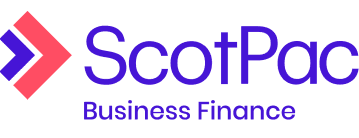On-Demand Finance
Rate (p.a)
4% – 6% of invoice value
Loan Amount
$1,000 to $100,000
Term
Up to 60 days
Establishment Fee
None
Finance when you need it and no costs when you don’t. No establishment costs, hidden fees or lock-in contracts.
Unlock working capital through your invoices for unexpected expenses or opportunities for growth.
Integrates with Xero, MYOB, QB & Reckon to automatically sync client invoices and speed up the approval process
Limited Time Only: Complete Your Application Within 24 hours and Receive up to $250 credit on your First Funding
Invoice Finance
Rate (p.a)
Upon Application
Loan Amount
$10,000 to $10,000,000
Term
minimum 12 months
Establishment Fee
Upon application
Boost your cash flow by accessing tomorrow’s payments, today.
ScotPac Invoice Finance gives you access to funds calculated on the value of your unpaid sales invoices and secured by a transfer of your invoices to ScotPac.
A personal service from a local dedicated relationship manager who understands your business.







